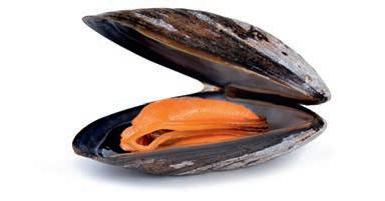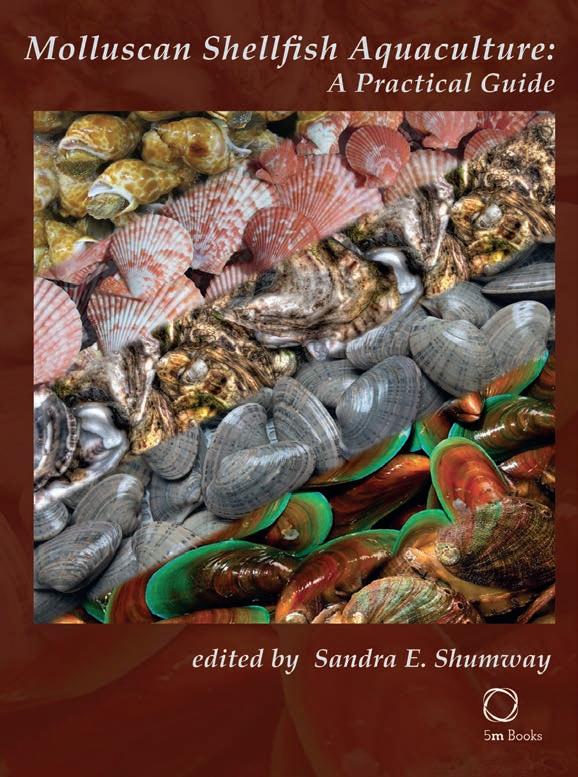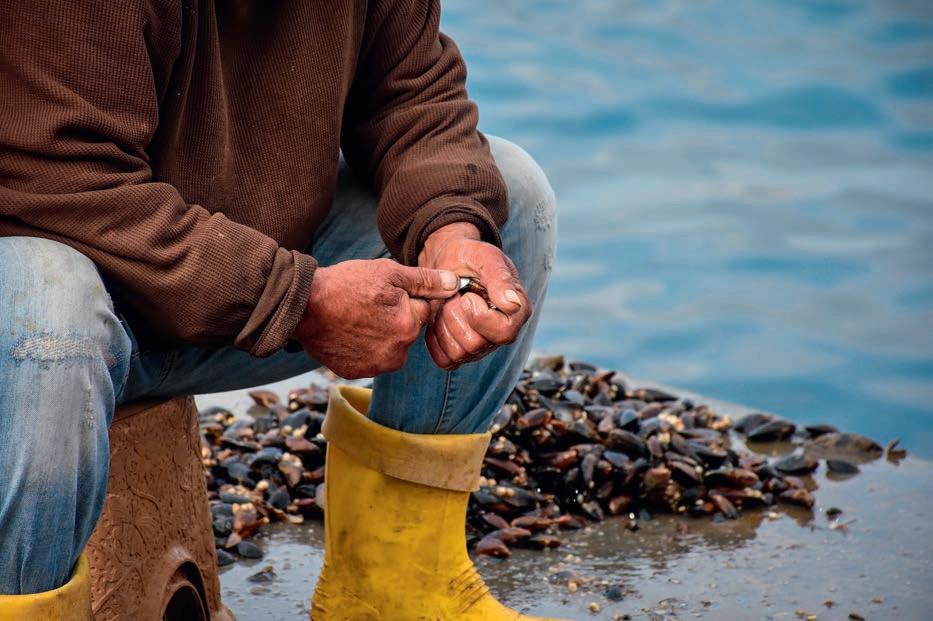
6 minute read
Nicki Holmyard
BY NICKI HOLMYARD
Aquaculture by the book
A new guide sets out everything you wanted to know about shellfi sh aquaculture
Molluscan Shellfi sh Aquaculture: A Practi cal Guide, edited by Sandra E Shumway, is a highly readable and comprehensive overview of the biology, culture techniques and harves� ng methods used for a host of shellfi sh species. It also covers site selec� on, business planning, hatchery construc� on, diseases and pests, biofouling, water quality, gene� cs, best management prac� ce, cer� fi ca� on and regula� on, along with informa� on on the environmental and socio-economic aspects of the industry.
This book is wri� en and edited by some of the most widely known and respected academics and industry prac� � oners, covering mussels, clams, edible and pearl oysters, scallops, cephalopods, abalone and gastropods such as marine snails and conch.
The extensive reference sec� on off ers readers the opportunity to take a deeper dive into par� cular areas of interest, making it invaluable for students, researchers and regulators, as well as current shellfi sh farmers and anyone looking to enter the industry.
“I hope this book will prove to be a useful manual that will provide newcomers with the informa� on necessary to spark their imagina� on and con� nue the global eff ort to grow and u� lise shellfi sh to their fullest poten� al,” Shumway told Fish Farmer.
In the preface, Shumway points out that culture of bivalve molluscs has been carried out for centuries, but it only began to prosper in the past few decades, when technological advances started to be made in land-based hatchery systems and coastal grow-out techniques.
Progress began with RRL Guillard, who isolated and cultured phytoplankton as a food source for bivalve larvae in the 1950s, and opened the door for the establishment of shellfi sh hatcheries. Today, hatchery produc� on is normal prac� ce for many species, and gene� c and molecular techniques are rou� nely used to improve broodstock and combat disease.
Technology has also crept in, with the use of sophis� cated models to help shellfi sh growers with site selec� on and carrying capacity, while real-� me data monitoring is being used to assist with stock management decisions.
The chapter on farming oysters for food and profi t, includes a sec� on on the eff ect of climate change on oyster growth. The authors point out that the oyster industry in many parts of the world is dealing with issues caused by changing oceanic and estuarine carbonate chemistry condi� ons, which are impac� ng on the ability of larval oysters to form proper shells.
They suggest that for oysters to thrive in changing environments in the future, hatchery produc� on may need to be moved on-land into recircula� on systems, and breeding programmes take mul� ple









Left: The front cover
This page, from top: Mussel farm; Sandra Shumway; Scallops; Oyster farm stressors into account, including thermal stress and hypoxia. An important chapter on water and shellfi sh quality concerns, points out that one of the major challenges shellfi sh aquaculture businesses face, is that of ge� ng to grips with the regulatory infrastructure.
“To the unini� ated, the world of shellfi sh regula� on may seem unfathomable, overwhelming and maybe a li� le discouraging,” Gregg W Langlois and Jorge Diogène
Fadini say. Welcome to my world!
They also conclude that ul� mately, it is the responsibility of shellfi sh growers to deliver a safe and wholesome product to their customers and suggest that understanding public health concerns and having control strategies in place to manage them is vital to the success of a business.
The sec� on on design and construc� on considera� ons for a molluscan shellfi sh hatchery, provides a comprehensive analysis of the fundamental principles and key criteria applicable to simple family companies growing a limited number of seed of one species, right through to large, corporate opera� ons producing billions of seed, using automated systems.
A sound piece of advice is given at the end of this chapter, which is to “expect the unexpected,” which as any shellfi sh farmer knows, happens just about every day in this business!
Prac� cal worksheets are appended as a useful aide-memoire on how to size hatcheries, nurseries, larval units, algal culture and broodstock facili� es, depending on the desired species and outcome.
Peter Cook, in the sec� on on business planning, highlights the fact that no ma� er how much � me, eff ort and funds are put into an aquaculture enterprise, the opera� on is doomed to fail if the shellfi sh cannot be sold at a reasonable price. Assessing the size and loca� on of a market, and having a clear handle on produc� on, processing and delivery costs, is essen� al before star� ng out on a new venture. This may seem obvious, but poor fi nancial planning has been the downfall of many shellfi sh businesses, the world over.
Marke� ng and the global market for molluscan shellfi sh is covered by Carole R Engle, who illustrates the complexity of the sector, due to the wide range of species, varie� es and product forms produced. In 2017, according to fi gures from the Food and Agriculture Organisa� on of the United Na� ons (FAO), 211 countries reported farmed produc� on, with China being the largest overall producer of shellfi sh.
While wild and farmed shellfi sh have always competed in the marketplace, farmed product began to exceed the wild harvest in volume and value in 1983, since when it has grown at an annual average rate of 6.6% per year. in 2017, the total volume of farmed product was nearly seven � mes greater than that from the wild, with clams and cockles accoun� ng for 36% by volume, oysters for 36%, mussels 14%, scallops 13% and abalone 1%.
This excellent book leaves one in no doubt that ours is a worldwide industry that is frequently overlooked in comparison to fi sheries, and off ers enormous poten� al for future development.
Shumway said: “As the global popula� on con� nues to increase, the need for sustainable, aff ordable food will also rise. Shellfi sh provide mul� ple benefi ts to the environment and a high-quality source of protein. Shellfi sh aquaculture can be large scale or sustenance level and provide jobs in developing regions. I hope the mul� ple benefi ts of shellfi sh aquaculture will con� nue to be recognized and expand globally. Shellfi sh aquaculture is good for the economy, good for the environment, and good for you!”
Molluscan Shellfi sh Aquaculture: A Practi cal Guide (5m Books, £150) FF













